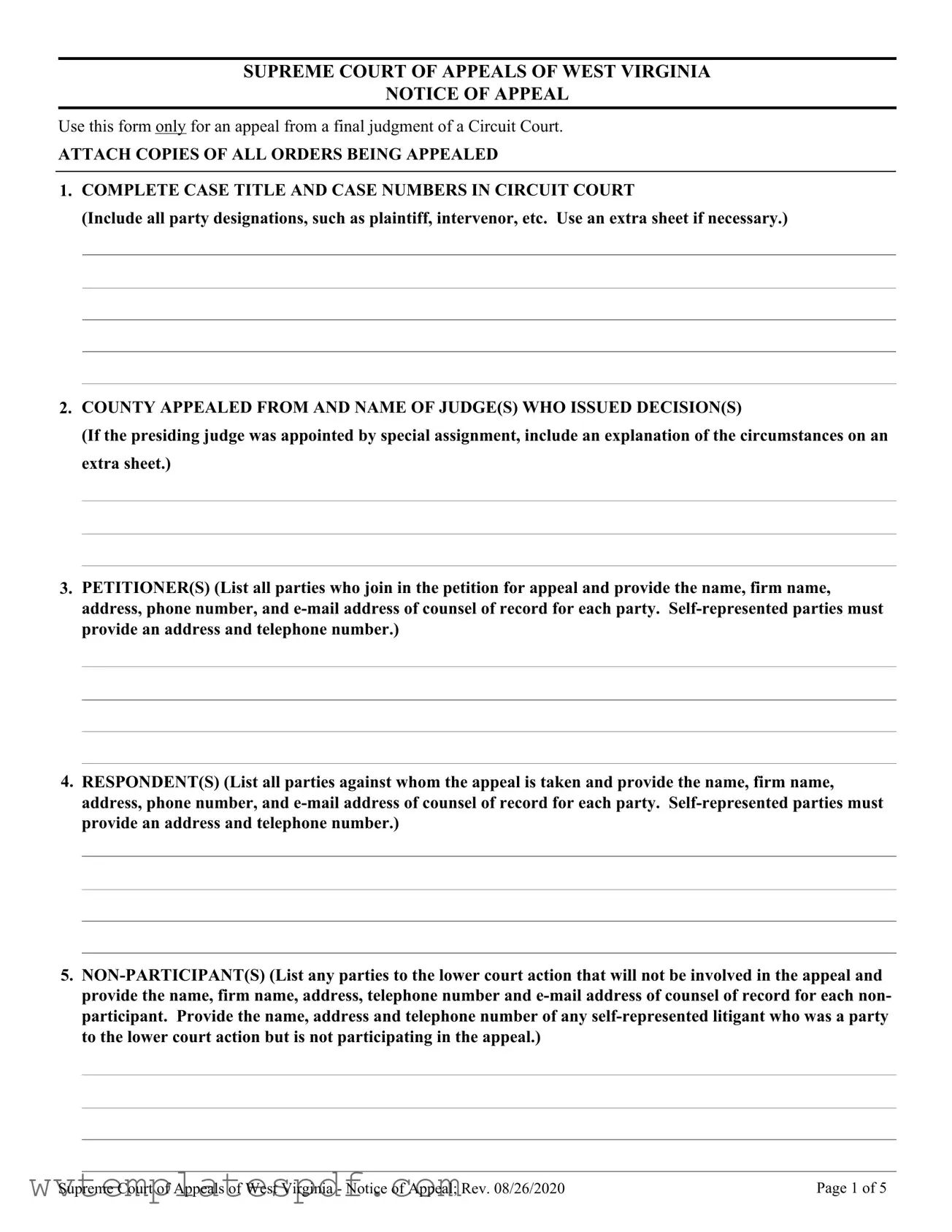The West Virginia Appeal form serves as a crucial document for individuals seeking to challenge a final judgment from a Circuit Court. This form is specifically designed to streamline the appeals process, ensuring that all necessary information is collected efficiently. It requires the complete case title and numbers, along with details about the county and the judge who issued the decision. Petitioners must list all parties involved in the appeal, including their legal representation, while also identifying any non-participants from the lower court action. Key dates, such as the entry of judgment and any post-trial motions, must be documented. In criminal cases, the form addresses bail status and sentencing details, whereas in abuse and neglect cases, it requires information about minor children and their guardians. Importantly, the form prompts appellants to confirm whether the judgment is final and whether the case has been previously appealed. It also asks about related cases and any confidentiality issues. The completion of this form entails attaching various documents, including a statement of the nature of the case and the assignments of error, which articulate the specific grievances being raised. Furthermore, the submission of a statutory docket fee is mandated, unless a fee waiver has been granted. By carefully adhering to the requirements of this form, appellants can effectively present their cases before the Supreme Court of Appeals of West Virginia.
